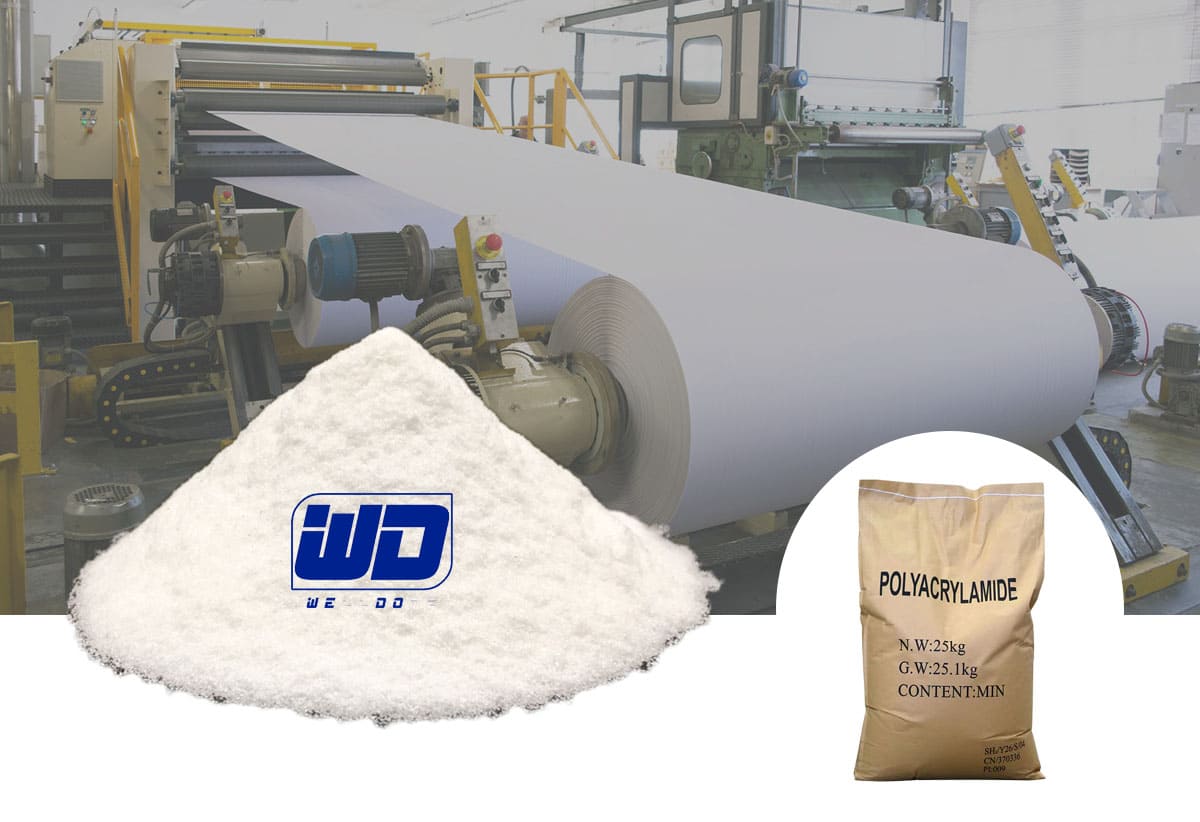Anionic polyacrylamide (APAM) is commonly used in paper mill wastewater treatment.
Anionic polyacrylamide (APAM) is widely used as a filter aid, pulp additive and sludge dewatering agent in the paper industry. This is because anionic polyacrylamide can effectively increase the viscosity and retention rate of pulp, reduce pulp loss, and accelerate sludge settlement.
However, for some paper mills, cationic polyacrylamide (CPAM) may need to be considered based on wastewater characteristics and treatment requirements. Cationic polyacrylamide can be adsorbed on negatively charged sludge particles to form larger flocs, which helps in the settling and filtration of sludge.
Therefore, the choice of using anionic polyacrylamide or cationic polyacrylamide needs to be determined according to the specific conditions and requirements of paper mill wastewater treatment. The paper mill wastewater treatment solution provided by Shandong Welldone polyacrylamide factory can conduct experiments and feasibility studies according to the wastewater situation to determine the best flocculant selection.







